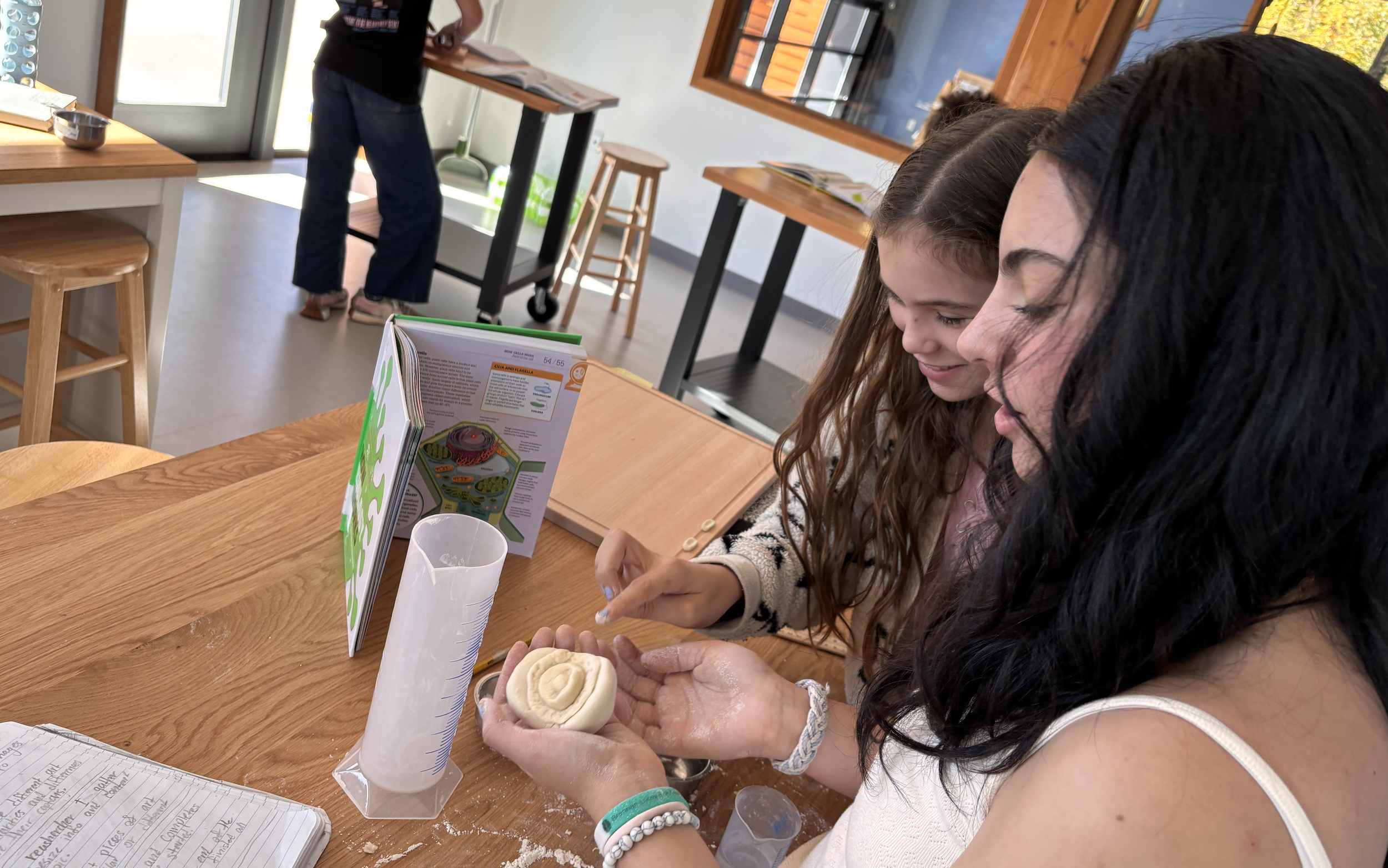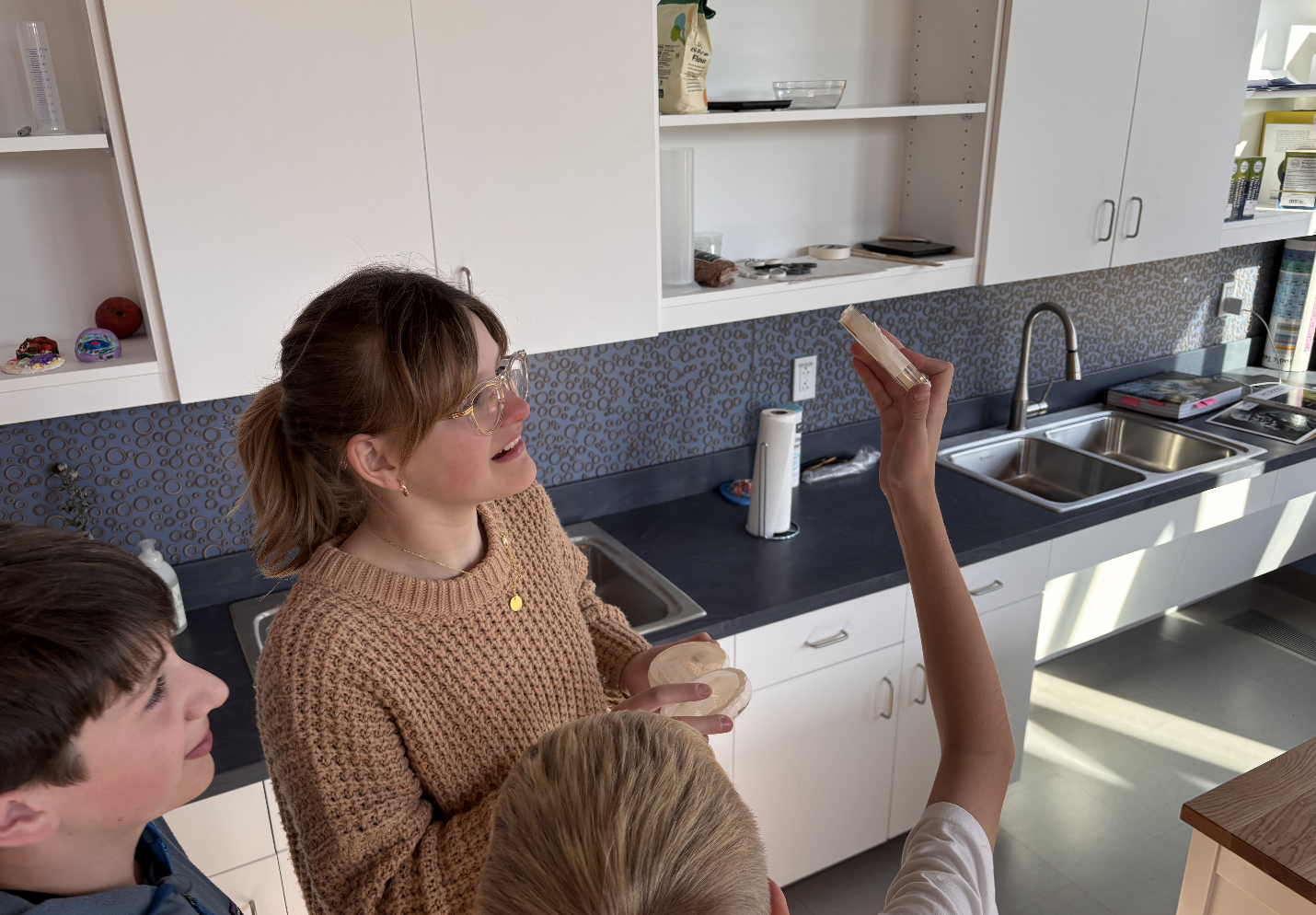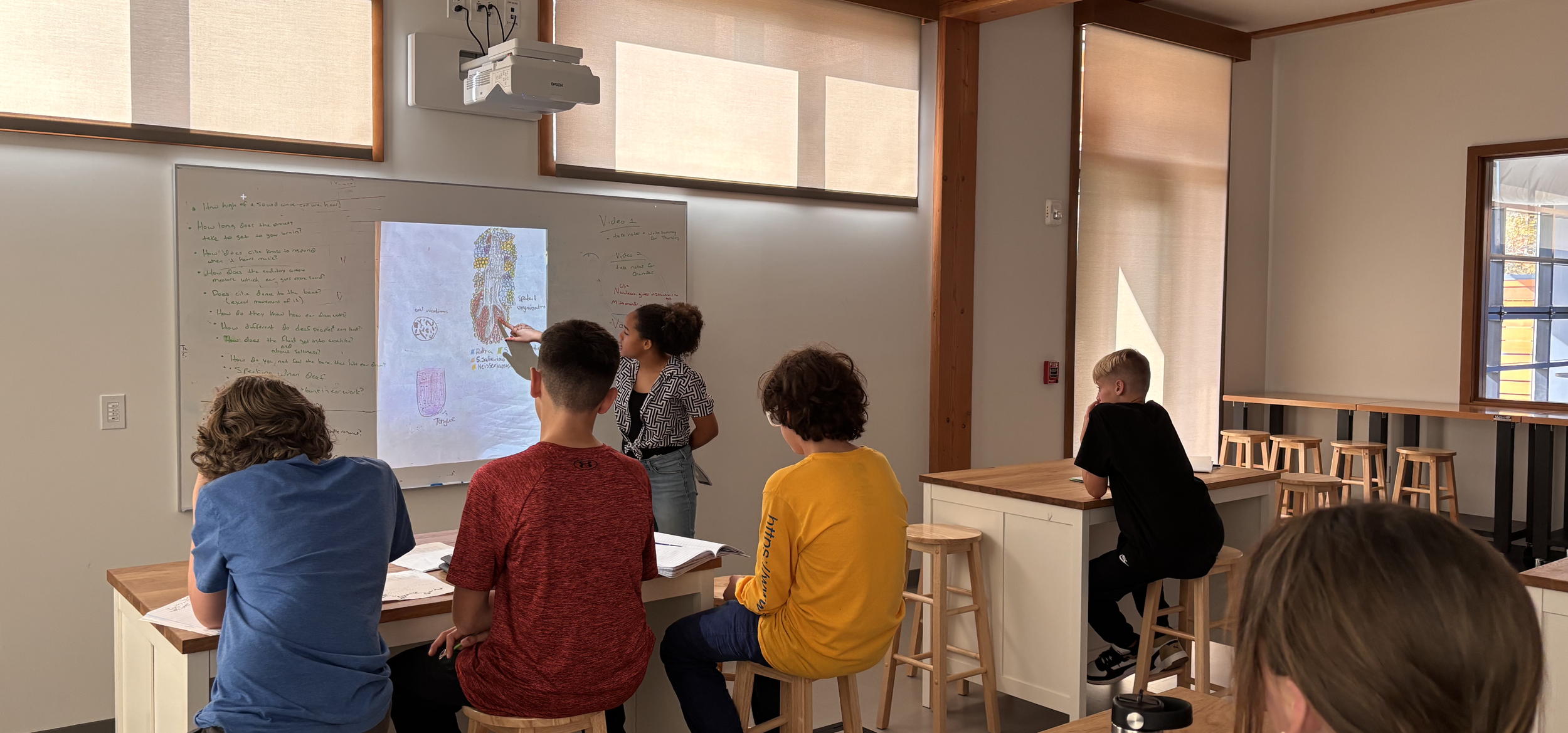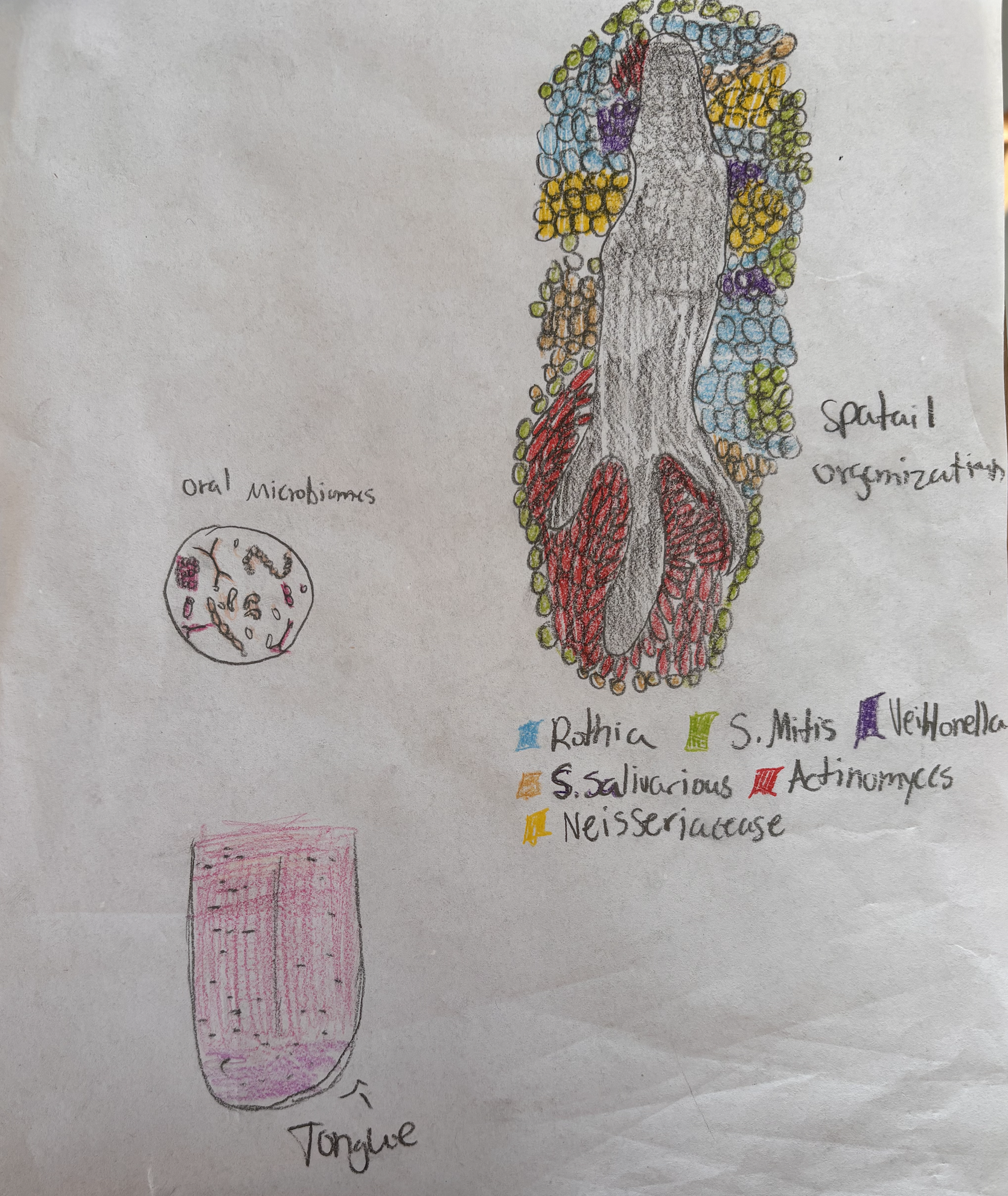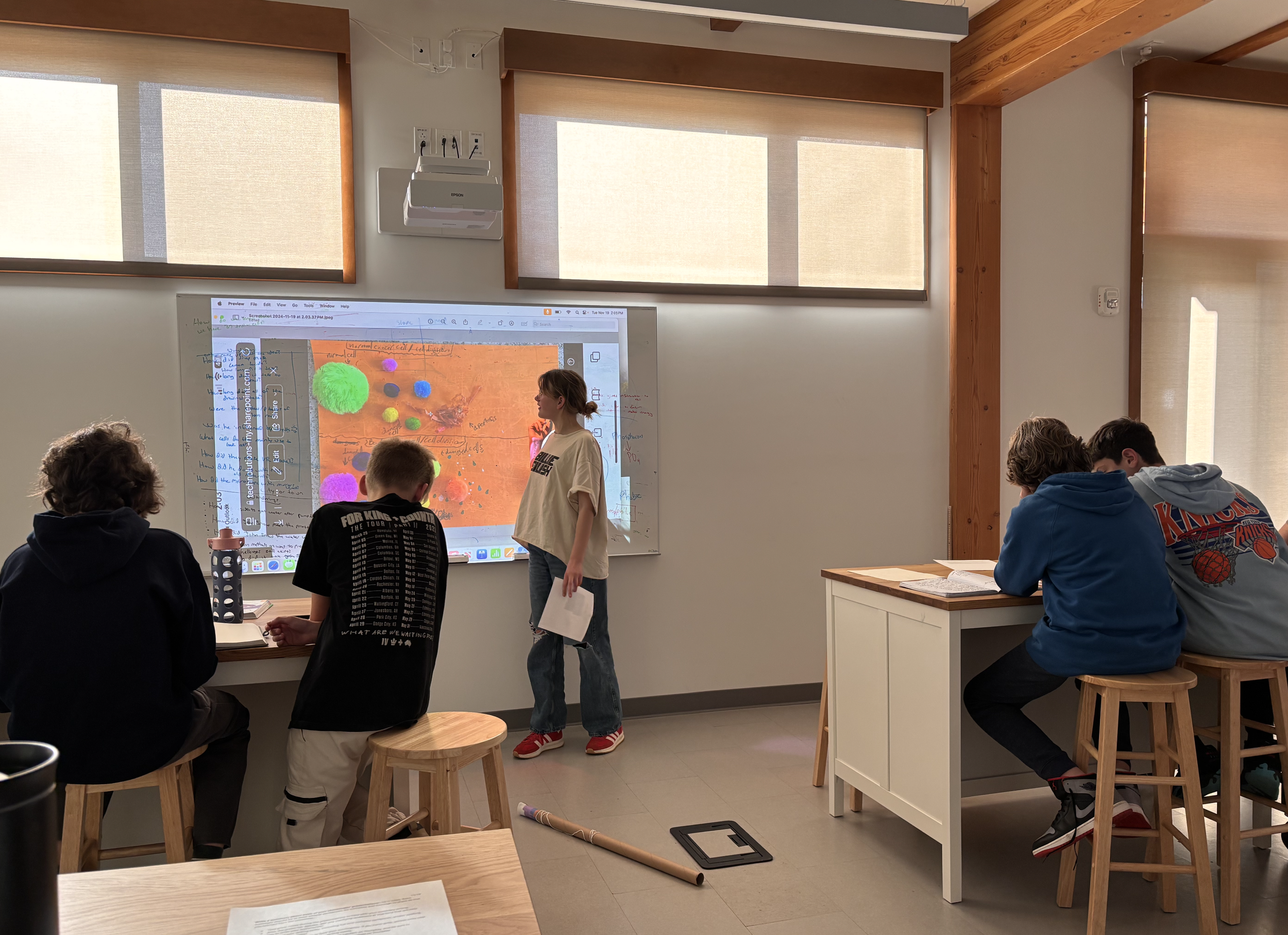
Upper School Blog
From Pufferfish Toxin to Cell Court: Exploring the Inner Workings of Cells
By Jennifer Staple-Clark, Founder and Executive Director, and Math & Science Specialist
"Judge Takes Sides in Court Trial Between Golgi Apparatus and Lysosomes."
"Flagella in Trouble: Swimming in Circles, Facing Courtroom Drama."
These are just a few of the headlines created by our 7th graders as part of an immersive exploration of cellular biology. Over the course of this project, students delved into the roles and functions of various cell components, using their growing scientific knowledge to write creative "Cell Court" stories. Each student imagined a fictional courtroom case, where cellular parts were put on trial for neglecting their duties. By personifying these microscopic components, the students brought them to life—forming juries to decide whether the parts were guilty or innocent of negligence.
One student wrote, “‘Flagella’s behavior has raised concerns in the scientific community. Experts compare its constant circular motion to a dog that can’t stop chasing its tail.’ Dr. Laura Spinney, a biologist in the story, comments, ‘It’s like trying to drive a car that only goes in circles. Flagella should be propelling the cell forward, not causing a microscopic traffic jam.’” In another case, a lysosome sued the Golgi apparatus for neglect, claiming it wasn’t receiving the full package of enzymes it needed. "Golgi sent enzymes to the other lysosomes, but left me to die,” said the “disoriented lysosome.” These imaginative stories not only demonstrated the students' understanding of cell biology, but also their ability to weave scientific knowledge into humorous and creative writing. Our students presented their “Cell Court” cases to one another, further reinforcing their understanding of cellular functions and the roles of each component. Leading up to this experience, the students had participated in a variety of explorations about cells.
At the start of the school year, students watched the documentary Living On One Dollar, which highlighted issues like waterborne illness and food insecurity. Motivated by their curiosity, they explored topics such as cholera and other public health challenges. They read and presented articles from the journals Science and Nature about cholera, diarrheal disease, and other public health issues that they saw in the documentary. They went on to read and write a summary about a public health case study called "John Snow, Cholera, the Broad Street Pump; Waterborne Diseases Then and Now," which introduced them to cholera in 1850s London and epidemiology historically. They went on to consider the cholera bacteria mathematically and biologically, ranging from calculations related to micron scale and the surface area and volume of bacteria cells to applications of scientific notation. By the end of that first week, the focus on cells grew, and our students used salt dough to create models of cells and visual representations of the functions of each component of a cell. They also played cell charades, where their classmates guessed which cell they were acting out through role-playing.
Using their growing understanding of cells, they each read Science Daily articles that ranged from "Mitochondria are Flinging their DNA Into Our Brain Cells" to "How Bacteria Form Communities on the Human Tongue". After reading, they prepared visual aids to explain their findings to the class, producing everything from detailed drawings to salt dough creations. As they presented, students taught each other about mitochondria, ribosomes, nuclear pores, and many other cell components.
It was soon time for them to design their own Petri Dish experiments to grow bacteria. They each created their own question, hypothesis, identified controls, and designed their experimental methods. From swabs of rocks and windows to water bottles and door handles, they recorded observations throughout the week, wrote a lab report, and drew conclusions based on their original research questions. One student, for example, hypothesized that bacteria would grow more abundantly on the floor in sunlight. After analyzing her results, she discovered that her hypothesis was correct.
The students had another foray into recent research related to cellular biology. This time, they each read an article from the science magazine OYLA, and they presented their findings to their classmates. At Slate School, every student pursues an independent research project of their own design, dedicating at least an hour each day to their project work. One of our students is studying neuroscience, while another is studying the digestive system. Each of these students selected an OYLA article related to cells associated with their project topic. Meanwhile, our other students read articles about stem cells, cancer, taxonomy, the Last Universal Common Ancestor (LUCA), among other topics. The students developed presentations, complete with visuals, to share how biological systems evolved and function.
As we explored cellular biology, I asked the students what they were most interested in learning about. Their responses sparked a variety of paths of inquiry. One student wanted to learn about the cells of toxic pufferfish, while a few others were curious about brain and nerve cells. Meanwhile, one student was interested in Botox as part of her cosmetics independent project. All of these ideas converged into a mini-study on sodium and acetylcholine blockers. We explored several sodium channel blockers: Novocaine, Lidocaine, and Tetrodotoxin from pufferfish. Another group delved into the acetylcholine-blocking action of Botox. To help teach their classmates about these blockers, the students used salt dough to model how each substance affects sodium channels in the cell membranes.
I was particularly excited to share with the students a story from our Head of School, Julie Mountcastle. As a 10-year-old, Julie had an idea: since pufferfish cause numbness, she proposed to her teacher that the toxin could be used as an anesthetic. Her teacher at the time dismissed the idea, saying that if it were possible, it would have already been done. But it turns out, Julie's childhood idea was ahead of its time. Today, tetrodotoxin is being researched and even used clinically in trials to treat neuropathic and cancer pain. This story was a powerful reminder for our students that even ideas from kids their own age can have great potential. At Slate School, we believe in nurturing their big ideas.
As the poet W.B. Yeats once said, "Education is not the filling of a pail, but the lighting of a fire." At Slate School, we strive to ignite that fire in every student. Through an interdisciplinary approach to cellular biology, our students are not only mastering scientific concepts but also pursuing their own interests and curiosities. They’re learning the fundamentals of biology while integrating mathematical and historical perspectives. Along the way, they’re developing critical skills in writing—both creative and analytical—and honing their ability to communicate their ideas effectively through presentations.
